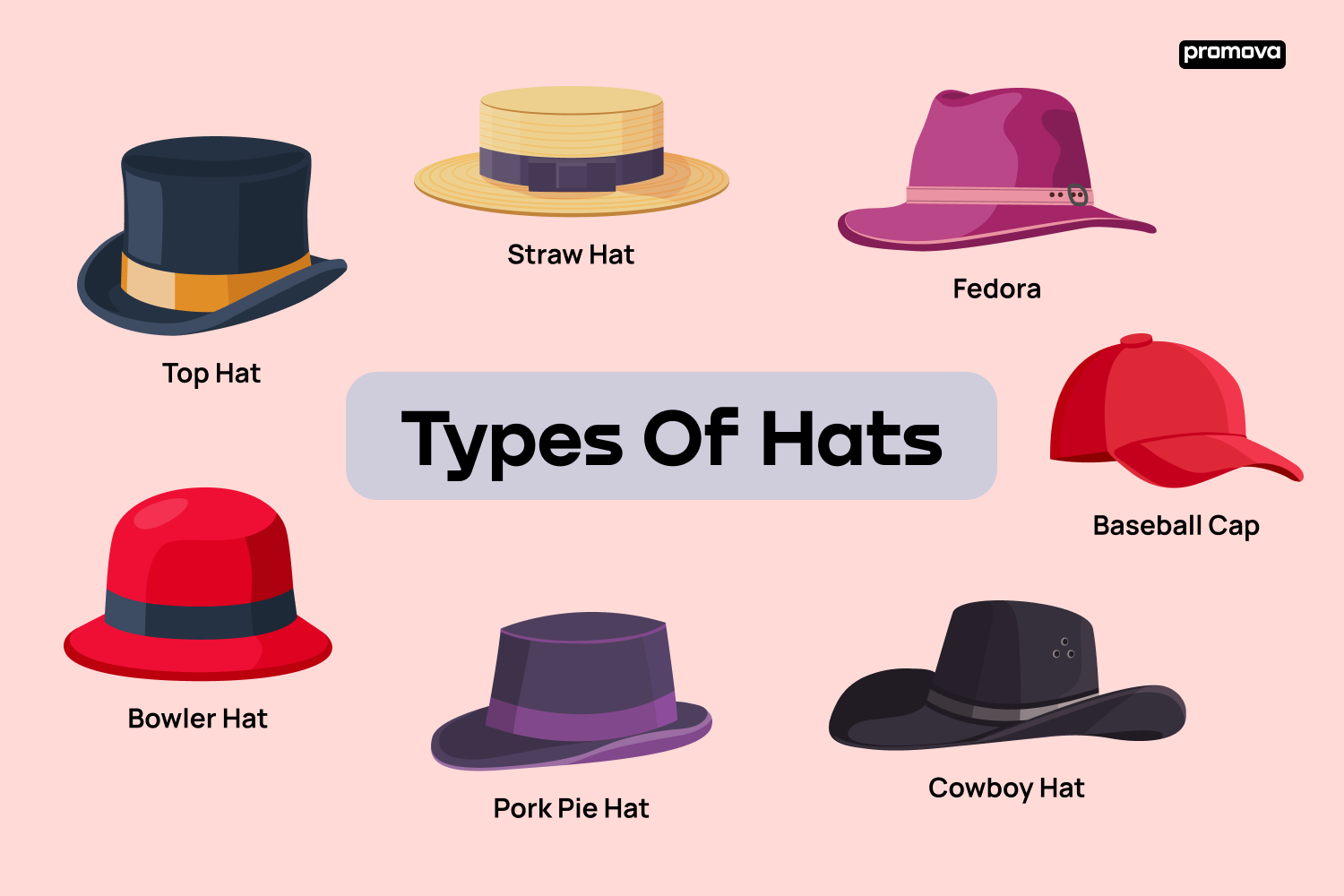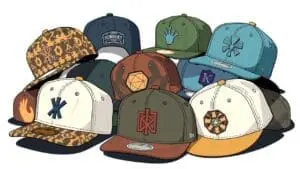According to a recent study by Hats.com, the average hat size for men is 7 3/8, while for women it’s 7 1/4. This statistic highlights the importance of understanding hat sizes in today’s fashion landscape. As we delve into the world of hat sizing, we’ll explore the crucial aspects of finding the perfect fit, from measurement techniques to innovative sizing technologies.
• Hat sizing involves precise measurements of head circumference
* Different hat styles may require unique sizing approaches
* Modern technology is revolutionizing the hat sizing process
Table of Contents
- Understanding Hat Sizes in 2024
- Measuring Your Head for the Perfect Fit
- Hat Size Charts and Conversions
- Hat Styles and Their Sizing Considerations
- Technology and Innovation in Hat Sizing
- Addressing Unique Head Shapes and Sizes
- Seasonal Considerations in Hat Sizing
- Hat Care and Its Impact on Sizing
- The Psychology of Hat Sizing
- Future Trends in Hat Sizing
TL;DR
- Accurate head measurement is crucial for finding the right hat size
- Different hat styles may require different sizing approaches
- Technology is playing an increasing role in hat sizing, including 3D scanning and AI-powered predictions
- Seasonal factors and hat care can affect sizing over time
- Understanding international size conversions is important for global hat shopping
- Custom sizing options are available for non-standard head shapes and sizes
- The future of hat sizing includes sustainable and virtual try-on solutions
Understanding Hat Sizes in 2024
In 2024, selecting the right hat size is crucial for both comfort and style. With the increasing popularity of hats as fashion statements and functional accessories, knowing your correct hat size has become more important than ever. This section will explore the fundamentals of hat sizing and why it matters in today’s fashion landscape.
Hat sizes are typically measured in inches or centimeters. Proper sizing ensures comfort, fit, and longevity of the hat. Incorrect sizing can lead to discomfort, headaches, and premature wear of the hat.
According to Panama Jack, most adult hat sizes fall between 6 3/4 and 7 5/8. “Adult hat size range” (Panama Jack)
The Importance of Proper Hat Sizing
Proper hat sizing is essential for ensuring comfort, style, and functionality. A well-fitted hat not only looks better but also performs its intended purpose more effectively, whether it’s providing sun protection or keeping you warm in cold weather.
A properly sized hat stays in place during activities. Correct sizing prevents pressure points and discomfort. Well-fitted hats maintain their shape and structure longer.
Measuring Your Head for the Perfect Fit
Accurate head measurement is the foundation of finding the perfect hat size. This section will guide you through the process of measuring your head circumference using various tools and techniques, ensuring you get the most precise measurement possible.
Head circumference is the primary measurement for hat sizing. Measurements should be taken at the widest part of the head. Multiple measurements are recommended for accuracy.
Tools and Techniques for Accurate Measurement
To measure your head accurately, you’ll need the right tools and techniques. We’ll explore various methods, from using a soft tape measure to improvising with string and a ruler, to ensure you get the most precise measurement possible.
Soft tape measures provide the most accurate results. String and ruler method can be used as an alternative. Digital measuring tools are becoming more common.

Step-by-Step Measurement Guide
Follow this step-by-step guide to measure your head circumference accurately. We’ll cover the proper positioning of the measuring tool and how to ensure you’re getting a consistent measurement.
Place the measuring tool about half an inch above your eyebrows and ears. Ensure the tape is snug but not tight. Take multiple measurements and average the results.
Common Pitfalls in Head Measurement
Avoid common mistakes that can lead to inaccurate hat sizing. We’ll discuss frequent errors in the measurement process and how to prevent them, ensuring you get the most precise hat size possible.
Pulling the tape too tight can result in an undersized hat. Measuring at the wrong position on the head can lead to fit issues. Failing to account for hair volume can affect sizing accuracy.
| Common Measurement Mistakes | How to Avoid Them |
|---|---|
| Measuring too tightly | Keep tape measure snug but not tight |
| Incorrect placement | Position tape just above ears and eyebrows |
| Ignoring hair volume | Consider hairstyle when measuring |
| Using stretchy measuring tools | Use a non-elastic measuring tape |
| Taking only one measurement | Average multiple measurements for accuracy |
Hat Size Charts and Conversions
Understanding hat size charts and conversions is crucial for navigating the various sizing systems used by different manufacturers and regions. This section will help you interpret these charts and convert between different sizing standards.
Hat size charts vary between manufacturers and regions. Conversion between different sizing systems is often necessary. Understanding size ranges helps in selecting the right fit.
Interpreting Hat Size Charts
Learn how to read and understand hat size charts effectively. We’ll break down the different components of these charts and explain how to use them to find your perfect hat size.
Hat size charts typically include head circumference and corresponding hat sizes. Some charts may include both imperial and metric measurements. Size ranges may be provided for adjustable hats.
International Hat Size Conversions
Navigate the differences between US, UK, and European hat sizing systems. We’ll provide conversion tables and tips for ensuring you select the right size when shopping for hats internationally.
US sizes are typically in inches, while European sizes are in centimeters. UK sizes may use a different numerical system. Some international brands provide size equivalents on their charts.
Numerical vs. Letter Sizing
Understand the differences between numerical measurements and letter-based sizing systems. We’ll explain how to translate between these systems and when each is typically used in hat sizing.
Numerical sizing provides more precise fit options. Letter sizing (S/M/L) is often used for stretchier or adjustable hats. Some brands use a combination of numerical and letter sizing.
Hat Styles and Their Sizing Considerations
Different hat styles may require unique sizing approaches. In this section, we’ll explore how various hat types impact sizing considerations and what to keep in mind when selecting sizes for specific styles.
Hat style affects how it sits on the head and impacts sizing. Some styles are more forgiving in terms of fit than others. Material and construction play a role in how a hat fits.
Sizing Variations Across Hat Types
Discover how different hat styles may require adjustments in sizing. We’ll cover a range of popular hat types and their specific sizing considerations to help you make informed choices.
Brimmed hats may require more precise sizing than beanies. Structured hats typically need a more exact fit than unstructured ones. Some hat styles are designed to sit differently on the head, affecting size choice.

Baseball Caps and Snapbacks
Compare the sizing flexibility of adjustable caps with the precision fit of fitted styles. We’ll discuss the pros and cons of each and how to choose between them based on your sizing needs.
Adjustable caps offer a range of sizes within a single hat. Fitted caps require more precise sizing but provide a custom feel. Snapbacks typically come in standard sizes with adjustable closures.
Check out Yupoong Trucker Hats to see examples of adjustable hat options.
Beanies and Winter Hats
Understand how the stretchiness of materials affects sizing in cold-weather headwear. We’ll explore the unique considerations for sizing knit hats and how to account for their flexibility.
Knit hats often have more stretch and can accommodate a range of sizes. Some beanies are sized, while others are one-size-fits-most. Consider the thickness of the material when choosing a size for winter hats.
Technology and Innovation in Hat Sizing
Explore cutting-edge technologies revolutionizing the hat sizing process in 2024. This section will introduce you to digital solutions that are making it easier than ever to find your perfect hat size.
Digital sizing tools are becoming more prevalent in the hat industry. AI and machine learning are being used to predict and recommend sizes. Virtual try-on experiences are enhancing online hat shopping.
Digital Sizing Solutions
Discover the latest digital tools and applications designed to help you find your perfect hat size. We’ll explore how these technologies work and how you can use them to enhance your hat shopping experience.
Smartphone apps can use camera technology to measure head size. Online retailers are implementing digital sizing guides. Some platforms offer personalized size recommendations based on user data.

3D Head Scanning Apps
Learn about mobile applications that use augmented reality to measure and recommend hat sizes. We’ll discuss how these apps work and their potential to revolutionize the way we shop for hats online.
3D scanning apps use your phone’s camera to create a digital model of your head. These apps can provide highly accurate measurements for hat sizing. Some apps can virtually place hats on your head to show fit and style.
AI-Powered Size Prediction
Discover how online retailers are using artificial intelligence to suggest accurate hat sizes based on customer data. We’ll explore the potential of this technology to improve the online hat shopping experience.
AI algorithms analyze purchase history and return data to improve size predictions. Machine learning models can account for variations in hat styles and materials. Some systems can provide personalized fit recommendations based on user preferences.
Addressing Unique Head Shapes and Sizes
Find options for individuals with head sizes that fall outside the typical range. This section will explore solutions for those who struggle to find hats that fit their unique head shapes and sizes.
Non-standard head sizes may require custom sizing options. Certain hat styles may be more accommodating for unique head shapes. Aftermarket solutions can help adjust hat sizes for a better fit.
Solutions for Non-Standard Head Sizes
Explore the options available for those with head sizes that don’t fit into standard sizing charts. We’ll discuss custom sizing services and adjustable hat options that can accommodate a wider range of head sizes.
Custom hat makers can create hats for any head size or shape. Some brands offer extended size ranges for their hat lines. Adjustable hats can be a good option for those between standard sizes.

Custom Hat Sizing Services
Explore services offering made-to-measure hats for perfect fit and comfort. We’ll discuss the process of getting a custom-sized hat and the benefits it can offer those with non-standard head sizes.
Custom hat sizing often involves detailed head measurements. Milliners can create hat blocks specific to an individual’s head shape. Custom-sized hats may offer better comfort and longevity.
Hat Size Adjusters and Inserts
Learn about products that can help adjust hat sizes for a better fit post-purchase. We’ll cover various types of hat size adjusters and inserts and how to use them effectively.
Hat size reducers can make a slightly large hat fit better. Foam tape and felt strips can be used to adjust fit in specific areas. Some hats come with removable inserts for size customization.
Seasonal Considerations in Hat Sizing
Understand how different seasons and activities can affect hat sizing choices. This section will explore how to adjust your hat sizing approach based on weather conditions and intended use.
Seasonal temperature changes can affect head size. Different activities may require different hat fits. Material choices impact how a hat fits in various weather conditions.
Adjusting for Weather and Activities
Learn how to account for seasonal changes and specific activities when choosing hat sizes. We’ll discuss the factors to consider for both warm and cold weather hat sizing.
Summer heat can cause slight swelling, potentially affecting hat fit. Winter hats may need to accommodate additional layers. Active pursuits may require a more secure fit to keep the hat in place.

Summer Hat Sizing
Learn how to account for sweat expansion and the need for breathability when sizing summer hats. We’ll discuss materials and design features that can help ensure a comfortable fit in warm weather.
Breathable materials can help reduce sweat-related size changes. Slightly looser fits may be more comfortable in hot weather. Sweatbands can help manage moisture and maintain fit.
Winter Hat Sizing
Discover how to size winter hats to fit comfortably over additional cold-weather gear. We’ll explore strategies for ensuring your winter hats provide warmth without compromising on fit.
Consider the thickness of winter hat materials when sizing. Allow extra room for ear warmers or other cold-weather accessories. Some winter hats are designed with adjustable features for versatile sizing.
Hat Care and Its Impact on Sizing
Explore how proper care can affect the longevity of your hat’s fit. This section will cover cleaning, storage, and maintenance techniques that help preserve your hat’s size and shape over time.
Improper care can lead to shrinkage or stretching of hats. Different hat materials require specific care techniques. Regular maintenance can help maintain a hat’s original fit.
Maintaining Hat Size and Shape
Learn best practices for cleaning and storing hats to maintain their original size and shape. We’ll provide tips for preserving the fit of various hat types and materials.
Proper storage can prevent hats from losing their shape. Cleaning methods should be chosen based on hat material. Some hats may benefit from the use of hat forms or stands.

Cleaning and Storage Techniques
Discover techniques for cleaning and storing hats that help prevent shrinkage and stretching. We’ll cover methods for different hat materials and styles to ensure your hats maintain their fit
Cleaning and Storage Techniques
Discover techniques for cleaning and storing hats that help prevent shrinkage and stretching. We’ll cover methods for different hat materials and styles to ensure your hats maintain their fit.
Use appropriate cleaning products to avoid damaging hat materials. Store hats in a cool, dry place to prevent moisture-related size changes. Avoid stacking heavy items on hats to maintain their shape.
Reshaping and Resizing Methods
Learn about techniques for minor hat size adjustments at home. We’ll explore DIY methods for reshaping and resizing hats to improve their fit without professional intervention.
Steam can be used to gently reshape some hat materials. Hat stretchers can help increase the size of tight-fitting hats. Careful application of heat can help shrink slightly oversized hats.
The upcoming 150th Kentucky Derby in 2024 is influencing hat trends, with milliners reporting that customers are focusing on “getting it right” and opting for bigger hats and fascinators. “Kentucky Derby hat trends” (Courier Journal)
The Psychology of Hat Sizing
Understand the psychological aspects of wearing a well-fitted hat. This section explores how hat fit can influence perception, confidence, and personal style expression.
Hat fit can affect the wearer’s confidence and comfort. Cultural factors influence preferences in hat fit and style. The way a hat is worn can convey different personality traits.
Perception and Confidence in Hat Wearing
Explore how the fit of a hat can impact the wearer’s self-perception and the impressions they make on others. We’ll discuss the psychological benefits of wearing a well-fitted hat.
A properly fitted hat can enhance overall appearance and confidence. Ill-fitting hats may cause discomfort and self-consciousness. The right hat fit can complement facial features and body proportions.
Cultural Influences on Hat Sizing Preferences
Explore how different cultures and regions may prefer looser or tighter hat fits. We’ll discuss the historical and social factors that influence hat-wearing customs around the world.
Some cultures traditionally wear hats looser or tighter than others. Regional climate can influence preferences in hat fit and style. Occupational needs often dictate specific hat-fitting requirements.
The Role of Hat Fit in Personal Style
Learn how the way a hat fits can convey different personality traits and style statements. We’ll explore how adjusting the fit and positioning of a hat can alter its aesthetic impact.
Tilting a hat can create different looks and attitudes. The depth at which a hat sits on the head affects its overall appearance. Combining hat fit with facial features can enhance or soften certain characteristics.
Future Trends in Hat Sizing
Look ahead to potential developments in hat sizing for the coming years. This section will explore emerging technologies and practices that may shape the future of hat fitting and sizing.
Advancements in materials science may lead to more adaptable hat designs. Digital technologies are likely to play an increasing role in hat sizing and fitting. Sustainability concerns are driving innovations in adjustable and long-lasting hat designs.
Emerging Technologies and Practices
Discover cutting-edge innovations that are set to revolutionize hat sizing and fitting. We’ll explore new materials, digital tools, and manufacturing processes that promise to enhance the hat-wearing experience.
3D printing technology may enable rapid production of custom-fitted hats. Smart fabrics could allow for dynamic sizing adjustments. Advanced scanning technologies may improve the accuracy of digital sizing.
Sustainable Sizing Solutions
Explore how sustainability concerns are influencing the development of adaptable hat sizing options. We’ll discuss eco-friendly materials and innovative designs that aim to reduce waste and improve longevity.
Biodegradable materials are being developed for hat production. Modular hat designs allow for component replacement and size adjustments. Upcycling techniques are being applied to create adjustable hat designs.
Virtual Try-On Experiences
Discover how augmented and virtual reality technologies are revolutionizing online hat shopping experiences. We’ll explore the potential of these technologies to improve fit accuracy and customer satisfaction in e-commerce.
AR apps can overlay virtual hats on real-time images of customers. VR environments can simulate the experience of trying on hats in a store. AI algorithms can analyze facial features to suggest flattering hat styles and fits. https://www.youtube.com/embed/NkwzwCuj7p0
Recap: Mastering Hat Sizes in 2024
As we conclude our comprehensive guide to hat sizing in 2024, let’s recap the key points we’ve covered. From measurement techniques to future trends, understanding hat sizes is crucial for both comfort and style.
Accurate head measurement is the foundation of proper hat sizing. Different hat styles and materials require unique sizing considerations. Technology is playing an increasingly important role in hat sizing and fitting.
- Always measure your head accurately before purchasing a hat
- Consider the hat style and material when determining the right size
- Explore digital sizing tools for a more precise fit, especially when shopping online
- Don’t hesitate to seek custom solutions for non-standard head sizes
- Proper care and storage can help maintain your hat’s fit over time
- Stay informed about emerging technologies in hat sizing for future purchases
At SignaturePeak, we understand the importance of finding the perfect hat fit. Our range of custom hats caters to various head sizes and shapes, ensuring that every customer can find their ideal fit. With our 30-day return policy and secure checkout process, you can explore our collection with confidence. Whether you’re preparing for a special event like the Kentucky Derby or seeking a functional yet stylish hat for everyday wear, SignaturePeak’s customization options allow you to create a hat that not only fits well but also reflects your personal style. Visit our website today to discover how we can help you find your perfect hat fit.





Leave a reply